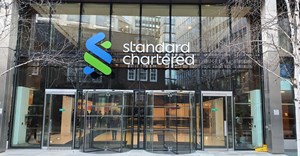
Related








Could South Africa's new, tighter exchange control rules end up backfiring?
Harry Scherzer 9 Aug 2023

In this AvaTrade review, we take a look at the broker’s impact on global trading trends and how to use this to your advantage.
Essentially, a trend represents the overall path that market values or asset prices follow over time. Market trends can move upwards (bullish), downwards (bearish), or sideways (flat). There isn't a set timeframe for a direction to be classified as a trend. Generally, the longer the direction persists, the more established the trend is.
Observing the raw price movement of an asset is the simplest method to spot trends. Traders who focus on price action believe that candlestick patterns provide all the necessary information to understand the Forex market. Identifying an uptrend involves observing when an asset's price consistently increases to higher highs and lows, whereas a downtrend is recognised when the price decreases to lower lows and lower highs. When the price moves between fixed levels of support (the bottom-most border) and resistance (the upper), it indicates a sideways or horizontal trend.
Active markets are great for swing traders who can establish broad price targets, while stable markets are more fitting for scalpers and day traders aiming for quick profits with short price targets.
When identifying the best times to enter and exit a trend, price action traders rely on trendlines and channels. During an uptrend, a line is drawn from a specific low point to a higher successive low point, extending the line into the future.
The line functions as a dynamic support line, with ideal entry points for buying identified when the price touches or nears the trendline.
On a downtrend, a trendline is drawn from one specific swing high to another successive but lower swing high and extended into the future.
Identifying optimal sell position entry points occurs when the price touches or comes close to the trendline, which then acts as a dynamic resistance line.
During range-bound markets, trendlines are sketched as horizontal lines, marking distinct support and resistance levels. Traders will aim to place buy orders when the price is at or close to the support line and sell orders when the price is at or near the resistance line.
Identifying good trend trades is not enough; the exit point determines the success of any position. Price targets are perfect for channel trading using raw price movement and trendlines. Channels are parallel trendlines drawn to restrict price activity. Target placement is best in channels. In an uptrend, the upper line indicates locations where the price may retrace or decrease, making it a suitable place to exit a buy order.
The end of a trend need not catch you off-guard. With the proper application of price action techniques and useful indicators, traders will ensure they trade with the flow, always following the cue of the market. You can be rewarded with trend trading.
